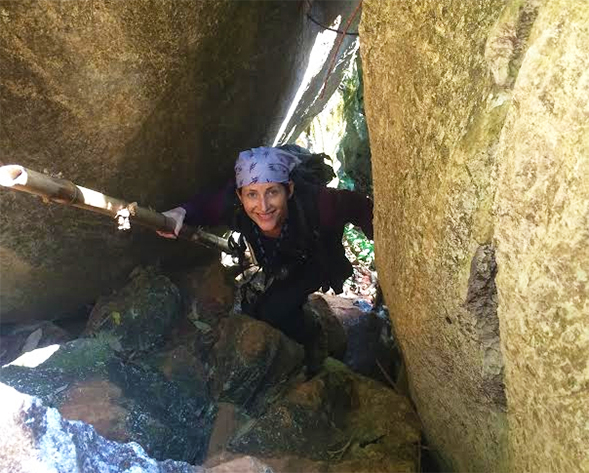Off the Beaten Course: ANTH 355
This course explores the differences and similarities between humans and nonhuman primates.

Off the Beaten Course is a series that delves into SDSU's course catalog to share unique and non-traditional classes.
Course title: Exploring Primate Behavior
Instructor’s name: Erin P. Riley
1) What inspired you to create this course?
Everyone is fascinated with our closest living relatives — nonhuman primates! I created this class as a general education course so that students from across the university could learn more about the behavioral and anatomical similarities and between ourselves and the other primates. We also explore the current threats facing the world’s remaining primate populations, including what we can do to curb those threats. I was eager to take advantage of one of San Diego’s outstanding educational resources — the San Diego Zoo.
2) What can students expect to learn from this course?
In this class, I strive to balance lecturing with more engaged teaching techniques, such as discussion groups and in-class activities that challenge students to learn by thinking, discussing and doing. Through this approach, students will better understand what it means to be a primate, how we are similar and distinct from the nonhuman primates, the advantages and disadvantages of life in social group (a key primate feature) and the multifaceted ways the environment shapes primate behavior.
In addition, students gain hands-on experience conducting scientific research at the San Diego Zoo. This project entails students learning how to search for and review scientific literature, conduct behavioral observations, interpret their results, and write them up in the form of a scientific report. Over the years, the zoo project has proven to be one of the students’ favorite parts of the course.
3) What makes this course different from similar courses?
The science of primatology draws from a number of fields, including anthropology, zoology, ecology and psychology. This course is distinct in that it focuses specifically on primate behavior, versus more general animal science courses, and it does so in an interdisciplinary way.
By learning how psychologists, anthropologists and biologists address key questions about primate behavior, this course serves as an excellent model of the value of cross-discipline exchange and collaboration.
4) Is there one day on the syllabus for this course you most look forward to? If yes, why?
One of my favorite days is when students work together in small groups to use the information they’ve learned about primate behavior to tackle questions concerning how to best deal with the challenges facing primate conservation. The students really get into it and I am continually impressed with their ideas and the discussion that ensues.
Admittedly, I am biased because this is my area of expertise in primatology, but I also really enjoy the section on ethnoprimatology — the study of the fascinating ways humans and other primates interconnect. We explore topics ranging from how human-induced habitat change affects primate behavior and survivability, to how primates figure into human folklore, mythology and traditional medicine, to how ensure sustainable human-primate coexistence in the Anthropocene.
5) What’s your favorite thing about teaching this course?
I love teaching this course because students are genuinely fascinated by the material; there is not one class meeting that goes by without students asking great questions. I also love being able to share first-hand experiences of what it means to be a primatologist with the students. I present not only the findings from my research on the human-primate interface in Indonesia and Florida, but also stories from the field, which I hope show students that science is fun.
I may not be able to convince all the students to become anthropology majors, but if I can get students excited about science and help build their skills to be part of it, then I have succeeded as a teacher and scholar.
6) Any other thoughts?
If students are interested in becoming more involved in primatology (either at the San Diego Zoo or at my field sites in Indonesia and Florida) they should contact me about doing an internship or special study course in the “Primate Wing” housed in SDSU’s Biological Anthropology Lab.



